Empowering the Unlit Corners: Unveiling the Energy Challenge in Rural Angola (PART 1)
7 de Dezembro de 2023
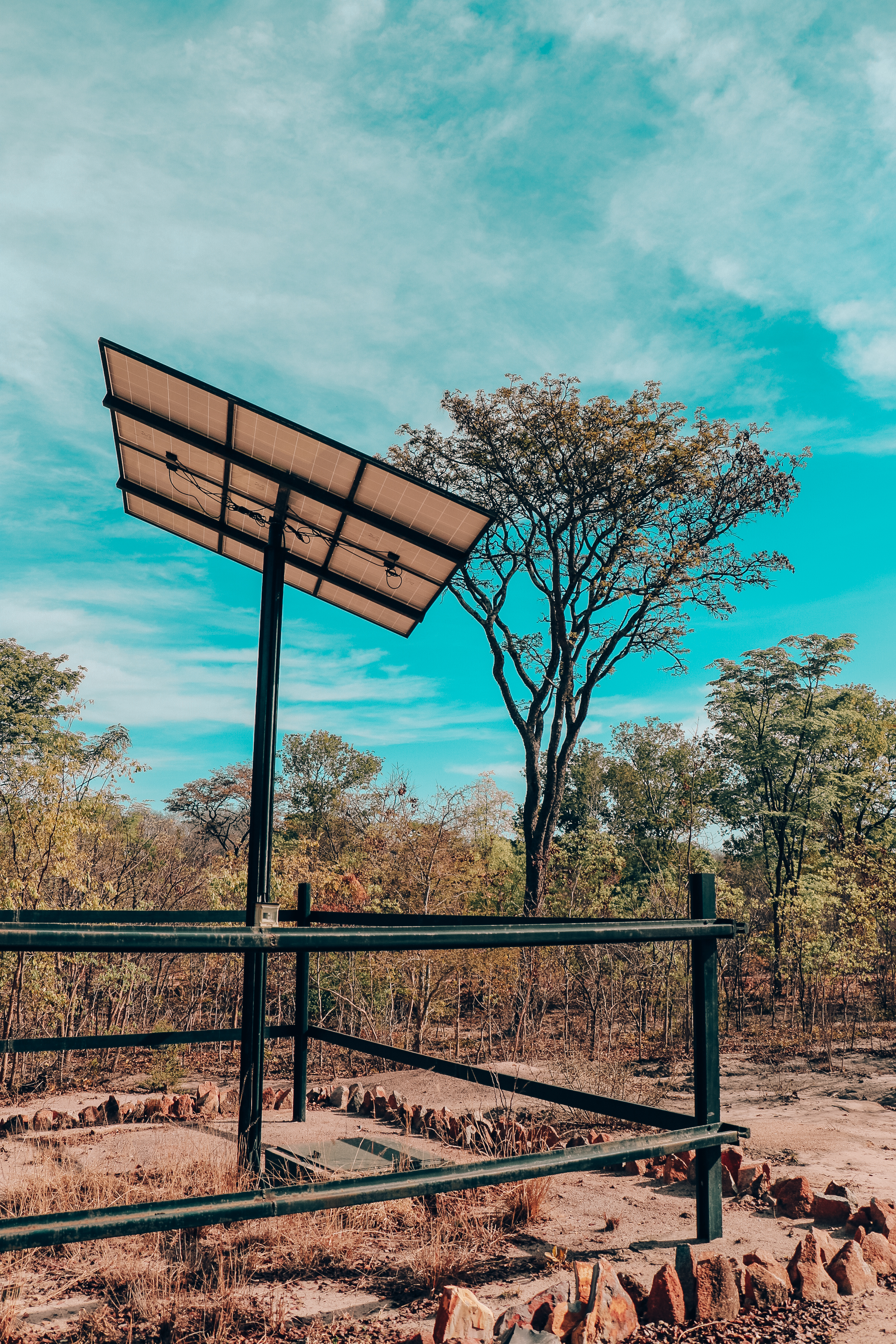
Solar Panel in rural area of Angola | @ UNDP Angola, 2023
Introduction:
For those who lived in the heart of Luanda during the nineties, city-wide blackouts were more frequent than expected, serving as background for stories of both collective disappointment and resilience, from borrowing a small generator from neighbors during a wedding or birthday party to doing homework at the kitchen table with candlelight. The population who lived in the capital city was fortunate enough to experience electricity, even if it included the regular blackouts, some lasting for many consecutive days.
While urban areas have witnessed improvements in electricity access since the end of the civil war in 2002, the story takes a different turn in rural and peripheral regions. Today, the struggle for affordable and sustainable energy persists, impacting the lives of millions. In this two-part blog series, we delve into the challenges faced by rural communities and explore initiatives aimed at transforming the energy landscape in Angola.
The Lingering Challenge:
Despite a growing economy and peace reigning since 2002, access to electricity remains a hurdle in Angola. Official data indicates that less than 45% of the population enjoys electricity, with rural areas facing even greater hardships, relying on wood and charcoal for energy needs. In these areas, women bear the brunt, engaging in unpaid domestic work and seeking alternative cooking fuels. Agriculture, a significant employer, grapples with low productivity, contributing to elevated food insecurity levels.
UNDP's Energizing Efforts:
Enter the United Nations Development Programme (UNDP), wielding TRAC 2 Funds to bolster energy access in Angola. With only 42.7% of the population currently connected to the grid, UNDP's ambitious aim aligns with the national goal of reaching 50% coverage by the end of 2022. The Renewable Energy enabling actions in Angola (TRAC 2 Programming) pilot project is a beacon of hope, seeking to attract investments and bridge the energy access gap.
Systems Thinking Unleashed:
Understanding the intricate energy landscape in Angola requires a holistic approach. The UNDP's AccLab team employs systems thinking and mapping to navigate the complex web of initiatives, public and private actors, and their interconnections. This innovative approach lays the foundation for initiatives grounded in a profound understanding of the challenges at hand.
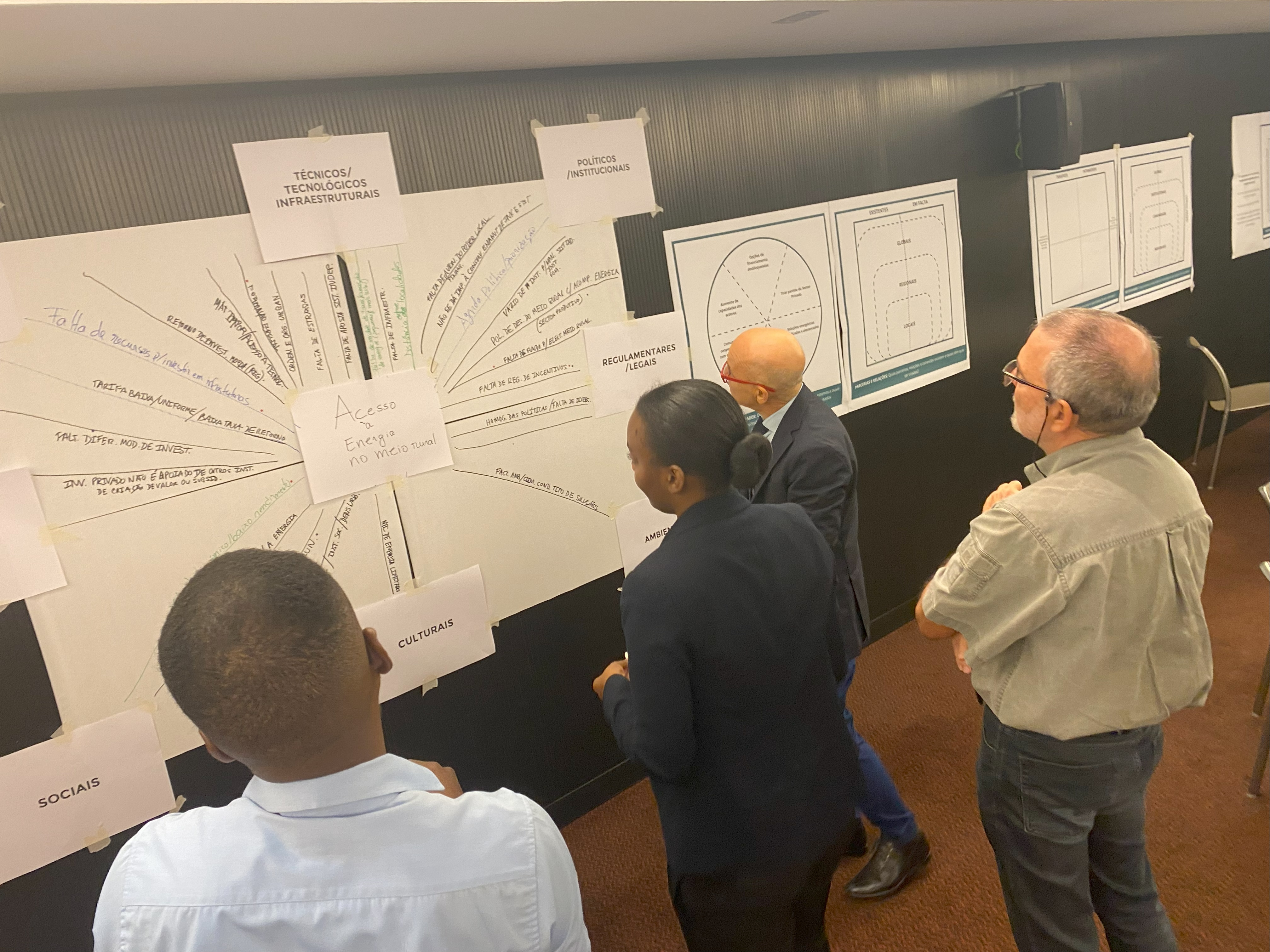
Energy access in rural areas, Systems Thinking and Sensemaking Workshop | @ UNDP Angola, 2022
Collective Intelligence Unleashed:
UNDP, alongside the Regulatory Institute for Electricity and Water Services (IRSEA) and the Angolan Association for Renewable Energies (ASAER), orchestrates workshops bringing together public and private stakeholders. Through systems mapping tools, participants collectively unravel the energy system's complexities, identifying challenges, roles, and opportunities. The first-hand insights generated contribute to informed decision-making for sustainable energy solutions.
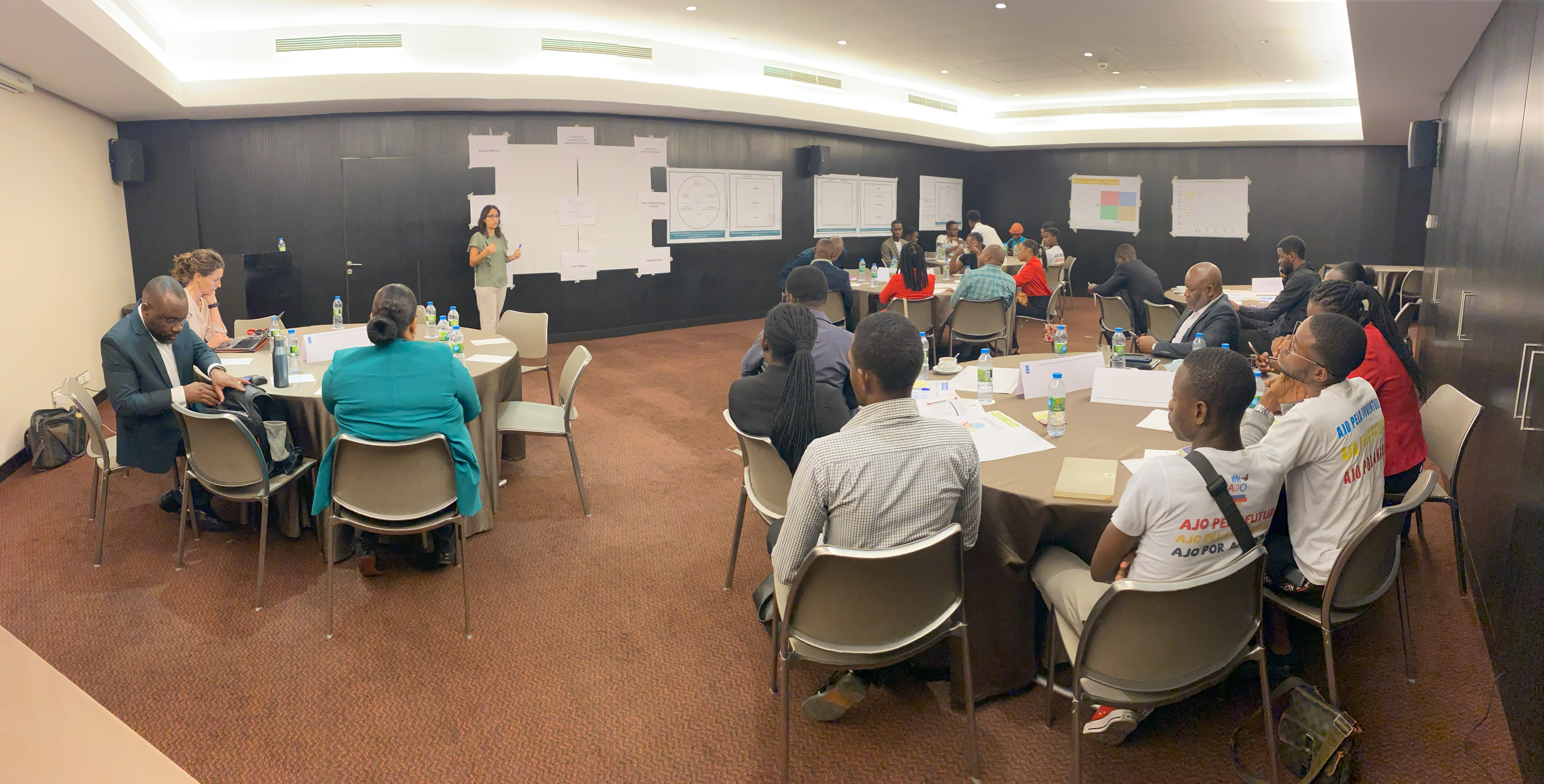
Energy access in rural areas, Systems Thinking and Sensemaking Workshop | @ UNDP Angola, 2022
Mapping the Energy Landscape:
The first half of the workshop focused on 3 main questions: ‘who, what, and why’. This was done through a series of system mapping exercises that helped deconstruct the issues around the main challenge ‘Access to energy in rural areas in Angola’. The second half was focused on the ‘where’ and ‘how. It was structured in the form of a sensemaking exercise where participants were invited to present projects/initiatives from the organizations they were representing, and facilitators actively listened and strategically collected insights using specific windows of analysis.
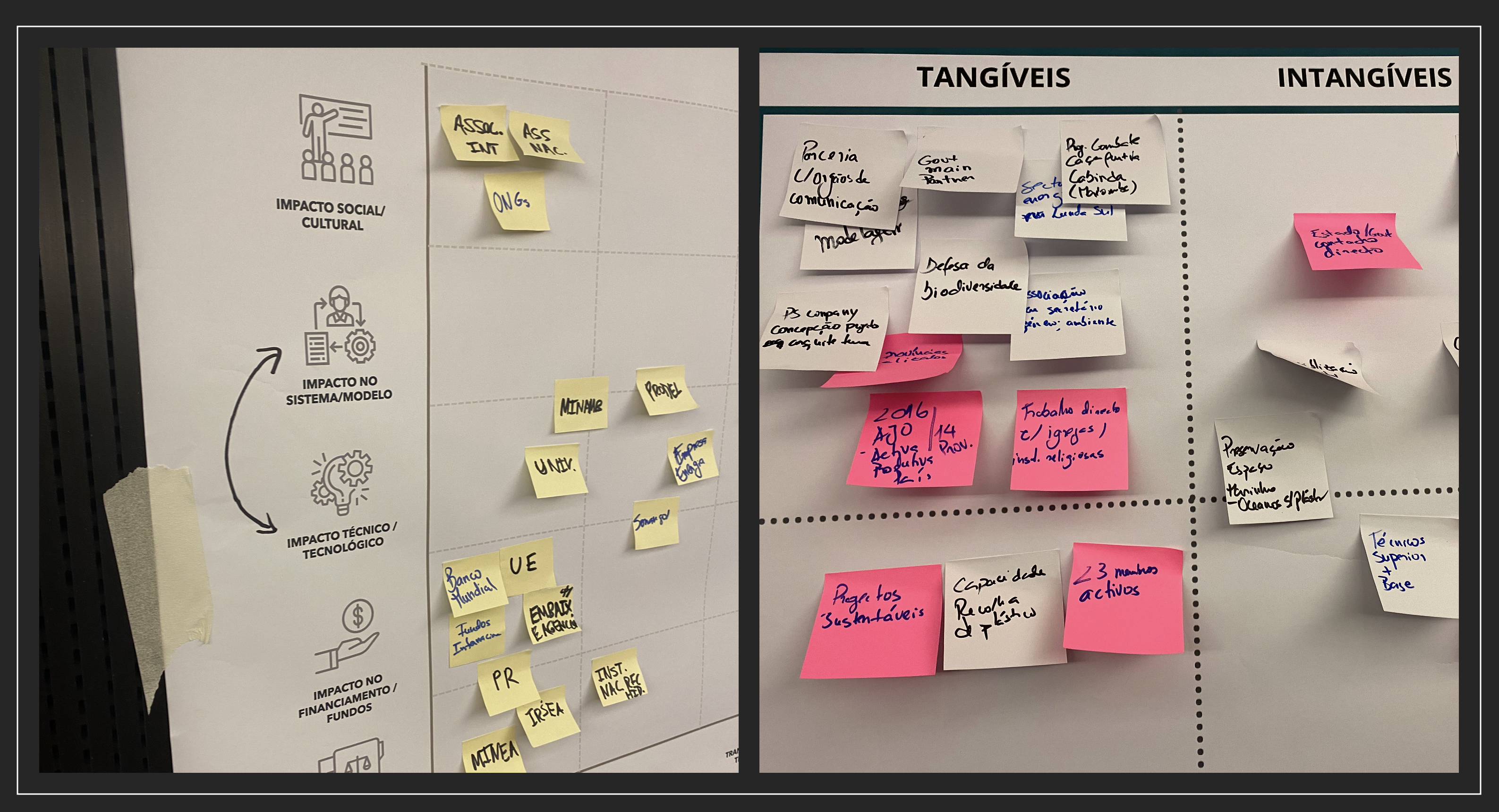
Mapping boards, Systems Thinking and Sensemaking Workshop | @ UNDP Angola, 2022
In dissecting the rural energy scenario, the workshop reveals a diverse but uneven tapestry. While some areas are connected to the grid or benefit from big hydro sources, many rely on generators or biomass for energy. The presence of new solar energy systems taking the place of private diesel generators in certain rural areas points to a potential solution. There are a few PV parks developed by recent Government projects that are benefiting some areas. However, the discussions notably omit wind and biomass energy, reflecting the need for diversified solutions.
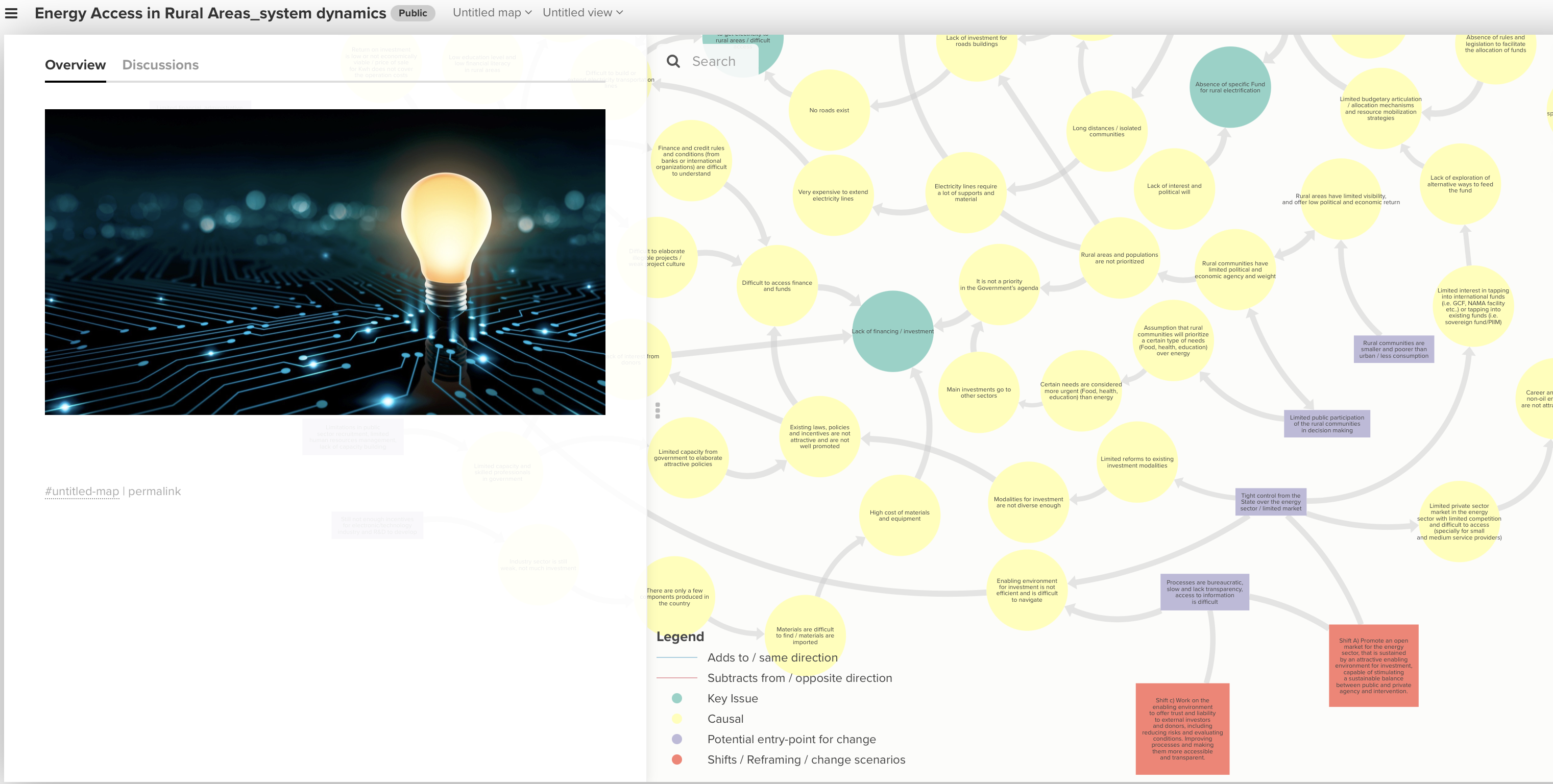
Systems Dynamics mapping | @ UNDP Angola, 2022
Insights into Rural Energy Needs:
The workshops shed light on the critical uses of energy in rural households, encompassing lighting, water pumping, refrigeration, and electronic appliances. Public needs, including street lighting, health facilities, schools, and agricultural production, underscore the multifaceted role of energy in rural development. However, the order of relevance and importance sparks discussions, highlighting the need for a strategic approach to electrification.
Key Drivers and Obstacles:
Delving deeper, the workshops identified three main clusters affecting the energy system: governance and human resources, financing, and accessibility. The '5 Whys' exercise uncovers root issues, including limited government and public company capacity, high infrastructure costs, and the challenge of balancing poverty levels with commercial electricity rates.
Recommendations for a Brighter Future:
A complete report featuring all the insights generated. Drawing from workshop intelligence, a set of recommendations emerges, which we organized in 4 clusters:
Improve Finance
- Promote an open market for the energy sector, capable of stimulating a sustainable balance between public and private agencies and intervention. Sustained by an attractive enabling environment for investment that can offer trust and liability to external investors and donors, including reducing risks and evaluating conditions, improving processes, and making them more accessible and transparent.
- Establish a Rural Electrification Fund, exploring diverse financing alternatives. Rural Electrification cannot be seen as an investment but as a cost for the short-term since it is a development issue and social priority, key to unlock the SDGs.
Improve the public finance landscape for the energy sector, including budget planning and allocation mechanisms. Work on new financing mechanisms tailored for small and medium energy companies – commercial banks and other funding institutions.
Increase Coordination
- Enhance coordination mechanisms within the public sector, both at central and local level, for joint program design, budgeting, and implementation, especially between the productive sectors, including the design of cross-sectoral programs specially focusing on rural issues from a systemic perspective. Alignment with environmental protection should be present at all stages.
- Increase the participation of Communities in planning and decision making and increase communication and sensibilization initiatives.
- Integrated planning, bringing together Development partners such as the World Bank, African Development Bank, UNDP, USAID, and others, could benefit the alignment of initiatives and optimization of resources for more effective implementation.
Build Capacity
- Accelerate and support the transfer of competencies to the local level, emphasizing training and capacity building for local authorities.
- Support to make public companies financially healthy, including capacity building (financial, administrative, monitoring, reporting, and planning, considering the sustainability of the works and infrastructure) and compliance mechanisms.
- Improve local level capacity in the energy sector, including specific technical and professional training in the rural areas, to ensure services.
Capacitation and sensibilization of the communities as final end-users and consumers of energy.
Support Innovation
- Experiment and pilot new independent, autonomous, and off grid means and solutions for rural electrification. Facilitation and incentive for the installation of off-grid independent systems could offer a solution as the grid will only be able to reach in the distant future. The Renewable independent systems piloting and expansion should not be seen as competing with grid expansion, instead it should be looked at as both complementary or as the most viable solution to mitigate the difficulties of rural communities and agriculture.
- Capacitation of the engineering fields education, and especially technical and professional training centers both at central and local level, including updated curricula aligned with the future of work and new technologies.
Foster the emergence and growth of local energy start-ups, that can bring new technologies and solutions to the market. Support R&D functions in Academia and private sector.
In Part 2 of this series, we'll explore further recommendations, solutions, and the crucial role of renewable energy in lighting up the remote corners of Angola. Stay tuned for an illuminating journey through the transformative landscapes of rural energy access as we take some of these recommendations into action.

 Locations
Locations


